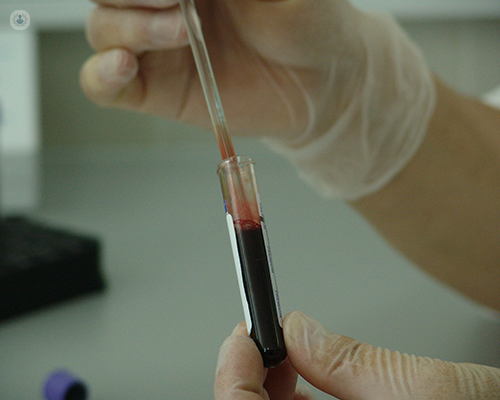Platelet-rich plasma (PRP) injections for pain management
Autore:A PRP (platelet-rich plasma) injection contains proteins that can help to manage pain caused by degeneration and inflammation of tissue. Mr Phil Wright provides you with a thorough overview of what this injection does, who it can help and when the benefits can be noticed.

How do PRP injections help with pain?
Platelet-rich plasma (PRP) injections are thought to offer potential benefits to patients who suffer from:
- Osteoarthritis (the loss of the smooth cartilage that covers the ends of bones)
- Tendinitis (pain arising from tendon tissue that connects muscle to bone)
Platelet-rich plasma (PRP) contains high concentrations of four different proteins (growth factors). These proteins have four functions:
- Influence cell growth
- Control bone formation
- Stimulate the development of new blood vessels
- Modulate tissue inflammation
Furthermore, it’s believed that PRP may generate a healing response in tissues experiencing pain caused by degeneration and inflammation.
How long does it take to get PRP injections?
PRP injections can often be arranged within two weeks of an initial consultation. They only take around 30 minutes to perform.
What type of pain does it help with?
The science and understanding of platelet-rich plasma is still developing and it may be appropriate for some conditions more than others. There is scientific evidence that states PRP helps pain from knee arthritis and tennis elbow (lateral epicondylitis). It’s also often used in other conditions, but the outcome may be less certain.
How quickly should the injections work?
Many patients begin to feel relief from symptoms from twelve weeks onwards. In a recent study of patients receiving PRP for tennis elbow, the treatment was successful in over 80 per cent of patients 24 weeks after their injection.
What happens during a session?
A blood sample is taken from the arm in the same way as having a blood test at a doctor’s surgery. The blood is spun in a machine ( centrifuge) that separates the platelet-rich portion of the blood. This is then injected into the painful area or joint and an adhesive dressing is applied. No general anaesthetic is required, although local anaesthesia before the PRP injection can reduce discomfort.
Who is a good candidate for PRP injections?
PRP is appropriate to consider when the pain has persisted despite trying over the counter analgesia (pain relief) and avoiding activities that provoke pain for six weeks. PRP is most helpful when used as part of a comprehensive program to improve musculoskeletal health. This includes quitting smoking,weight loss, activity modification and musculoskeletal physiotherapy with a long term commitment to rehabilitation and exercise.
Discover how Mr Wright’s first-class patient care can benefit you - visit his profile.


